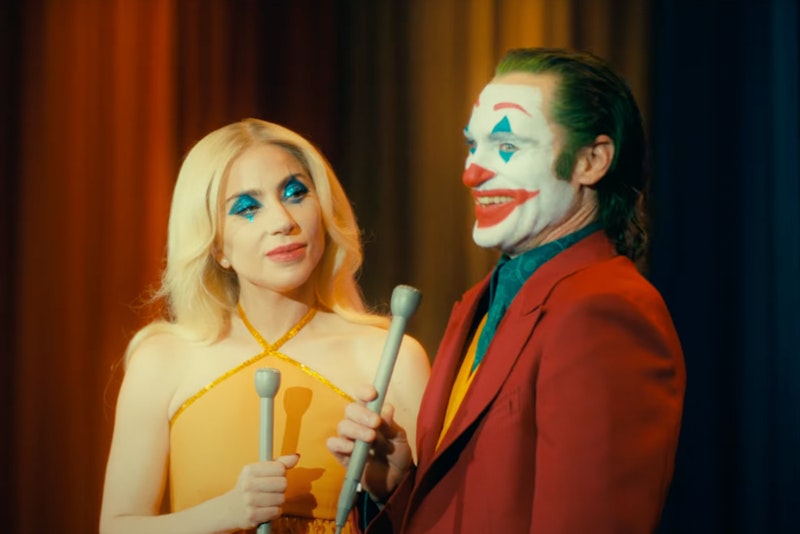In the final minutes of Joker: Folie a Deux, a bombing by Joker’s followers—in the downtown area of a Gotham City that is plainly more or less New York City—evokes memories of the 9/11 attacks. Emotionally, it falls flatter than the World Trade Center, though, since the viewer has by that point endured two drab hours of almost-random songs and perfunctory scenes of the abuse of Joker by the mean guards at Arkham Asylum.
The whole film is all right, but by the end, it’s like following up a long bout of depression with a surprise broken ankle. As with real bouts of depression, even the ankle break ends up feeling muted and irrelevant.
For any movie executives who are watching, not just at Joker’s own DC/Warner but at competitor Marvel/Disney, the reception to this movie must feel about like that: such a long, depressing streak of underperforming superhero/supervillain movies in the past few years, and now this somber end note. If Deadpool & Wolverine hadn’t been such a big hit just three months ago, I think a lot of critics would be writing about Folie a Deux being the last nail in the coffin of the superhero genre. As it is, the genre will limp along for a while and maybe get a second wind.
There have been many articles pondering whether the writer/director of the two Joker movies, Todd Phillips, is un-p.c. enough to count as a de facto right-winger or potential inspiration to violent incels, but writers of those left-wing musings should remember that Phillips was first known for his NYU student documentary about crazed, self-mutilating punk performer GG Allin. You can trace a certain (not very conservative) line of aesthetic logic from Allin (for whom a couple friends of mine opened down at CBGB’s, going on to be building-climbing “urban explorers”) through the drunken Vegas antics of the Hangover movies to Joker.
Interesting, then, that critics of the first Joker feared right-wing riots breaking out because of it, not mosh pits. But then, it would be conservative and uncool to fear mosh pits, right? Don’t get me wrong: I have ties to both subcultures, but the press’ obvious hatred of one and pretentious blind love of the other is laughable, as culturally partisan as any campaign ad.
If Phillips is a bit of a vandal/savage at heart, though, you have to imagine that he’s not too concerned about the long-term maintenance of superheroes as a viable entertainment franchise and cultural buttress. That’s fair. A Joker movie can be a deranged, burn-it-all-down one-off (or now two-off) without any hint or hope of fitting into an ongoing universe, multiverse, or further song verse. However, the metaphorical mosh pit can easily become less a source of joy than a site of self-destruction—a bit like a cynical young Justin Bieber insisting the short-term high of a Sean Combs orgy is totally worth it.
The sheer length and drabness of Folie a Deux makes it feel more like slow goth asphyxiation than like punk-rock vandalism, though. It’s not for most viewers. Maybe that’s OK. The DCU has room for experimentation.
In the fantastic animated DC shows and movies where Harley (more or less the character played in Phillips’ movie by Lady Gaga) was born three decades ago, all this musical-number madness would probably be a whimsical one-minute sequence, and we’d love it. Here, we’re trapped in it for over two hours, though, time enough for it to stop feeling like whimsy and start feeling like torture, or at least morbid malingering. It won’t linger into the future, though. A new DC Universe, without the Phillips version of the Joker or for that matter Zack Snyder’s dark, heavy version of the Justice League, is already upon us.
Not only does current DC head honcho James Gunn say that his version of the characters Peacemaker and Amanda Waller will appear in the new DC movies and shows that include next year’s Superman relaunch, but it is now rumored that Warner executives—impatient to see a single, coherent DCU emerge and rival Marvel’s increasingly-coherent multiverse—want Gunn’s 2025 Superman and Matt Reeves’ 2022 The Batman to be declared a single fictional reality, even if each auteur originally had his own stand-alone vision.
Sounds reasonable to me. Why wait another five or six years to add yet another version of Batman when we’ve already got one on hand who has recently hauled in nearly $800 million and spawned a well-reviewed Penguin spinoff TV series? And instead of treating Gunn-Superman and Reeves-Batman as two separate universes, they could easily just fit them together by playing up the idea that Gotham is dark while Metropolis is light.
And they can still add Gunn’s planned semi-humorous movie featuring Batman’s son Damien at some point, unless there’s a stubborn producer in the mix saying, “I just don’t see Robert Pattinson playing a dad, sorry,” which admittedly is the kind of random, insane obstacle that arises in these bureaucracies. But even if, hypothetically, Pattinson and the kid beat each other bloody, it’ll feel like lighthearted entertainment after what Phoenix and Gaga, for all their talent, just put us through.
—Todd Seavey is the author of Libertarianism for Beginners and is on X at @ToddSeavey

